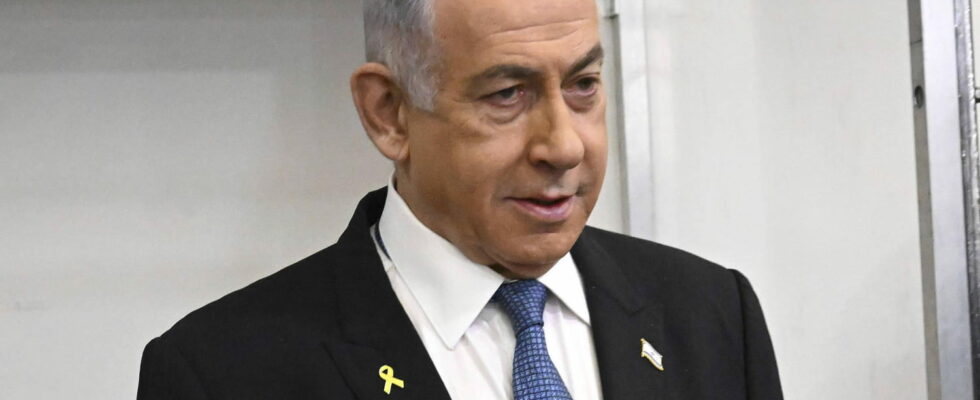Israel confirms having reached “an agreement on the release of hostages” with Hamas, but the Security Council must still approve the terms this Friday. The ceasefire is expected from Sunday, but how long will it last?
More than 15 months after the start of the war in Gaza, Israel confirmed that it had reached an agreement with Hamas on the night of January 16-17. But unlike the Prime Minister of Qatar who announced Wednesday evening the signing of a truce between the two belligerents, the first since the one and only ceasefire in the Palestinian enclave in November 2023, Benyamin Netanyahu speaks for his part of an “agreement on the release of the hostages”. The Israeli security cabinet is also due to meet on Friday to approve the agreement. But within the Israeli government, several ministers indicated Thursday evening that they intended to resign if the agreement was ever approved.
The Israeli Prime Minister focuses more on the exchange between the hostages and Palestinian prisoners than on the truce itself and does not dwell on the duration of the ceasefire which should come into force on [dimanche] January 19″ according to Qatar. And for good reason, the protocol provided for in this truce agreement does not mark the definitive end of the fighting. Hamas and its ally Islamic Jihad have also indicated that they have “reached an agreement” without talking about peace. “It is not a peace agreement, it is a suspension of hostilities”, also analyzes David Khalfa, co-director of the Middle East Observatory, on BFMTV. negotiations which were accelerated “due to “the American political configuration, with the arrival of Trump in power and the pressure exerted by him and his emissary on Netanyahu and Hamas”, but whose progress remains fragile.
Washington, Israel’s main ally, like the other members of the G7, is calling on the Jewish state and Hamas to work for the “full implementation” of the truce after this agreement which is “important news”. They also encourage the belligerents to go further and negotiate a lasting peace in a statement: “We urge all parties to constructively negotiate the subsequent phases of the agreement, to ensure its full implementation and the end definitive conclusion of hostilities. But nothing guarantees the success of the next negotiations. Before confirming the agreement, Benjamin Netanyahu affirmed on Thursday January 16 that Hamas had “withdrew from certain agreements” at the last minute: “Hamas is going back on the agreements and creating a crisis which prevents an agreement.” He warned that the Israeli government “will not meet until […] Hamas accepted all elements of the agreement.
What this truce agreement contains
During his press conference, the Qatari Prime Minister revealed that the agreement reached consisted of three phases. The first will consist of positioning Israeli troops along the Gaza border, “which will allow an exchange of prisoners, displaced people to find their homes and will also facilitate the transfer of injured people to be able to undergo treatment”, detailed Mohammed bin Abderrahmane Al-Thani.
“A delivery of humanitarian aid throughout the Gaza Strip allowing the entry of essential equipment, particularly for displaced people who lost their homes following the war, as well as the rehabilitation of hospitals and health centers and others” are also on the program for this first phase. Phases two and three remain unclear at this point. They “will be finalized during the implementation of the first phase”, indicated the Prime Minister.

33 hostages released slowly over the next 42 days
Concerning the hostages, 33 should be handed over to the Israeli authorities during a first phase which will also see the release of a thousand Palestinian prisoners currently held in the jails of the Hebrew State. On the side of the hostages, “civilian women […]”, children, the elderly, sick civilians and the wounded”, according to the Qatari Prime Minister, will be released as a priority by Hamas. The first releases are hoped from Sunday or Monday. A release in dribs and drabs is, however, expected with the first phase of the agreement lasting 42 days, the Israeli channel. N12 says that 19 of the 33 hostages will be released during the first 35 days in groups of three or four people. The remaining 14 hostages will be handed over to Israeli authorities within the final week.
In parallel with these exchanges, some 600 humanitarian aid trucks will be authorized to return, without hindrance from the Israelis, to the Gaza Strip to come to the aid of the Palestinian population particularly affected by the fighting which is raging. since October 2023 and the response of the Hebrew state against Hamas after the attack of October 7. Israeli soldiers will therefore be invited, during this truce, to withdraw little by little from the Palestinian enclave. The departure of the Israeli army from certain strategic points, such as the Netzarim corridor (center of the Gaza Strip) and certain places in the Philadelphia corridor (between the Palestinian enclave and Egypt), would be planned. Finally, note that during this first phase, negotiations will take place, with the objective of releasing the last hostages, namely Israeli soldiers for the most part.
Unsurprisingly, on Wednesday evening, the international community quickly rejoiced at the news. US President Joe Biden said he was “delighted”. “After fifteen months of unjustifiable ordeal, immense relief for the Gazans, hope for the hostages and their families. This evening, my thoughts are with Ofer and Ohad,” reacted Emmanuel Macron on X, while emphasizing: “The agreement must be respected. The hostages, released. The Gazans, rescued.
